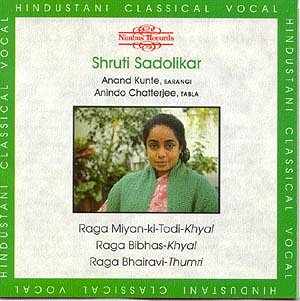Indian classical music has become increasingly available in UK concerts and recordings during the last few decades, and it now has a substantial following amongst British music-lovers, albeit if only as a delightful exotic novelty. Everyone should take an opportunity to experience the special atmosphere which performing artists and their vocally appreciative audiences bring to live concerts of this music. Indian instruments, sitar and tabla being the most familiar of many, are each unique and their tonal beauties are easy to enjoy. The dazzling virtuosity always on display, with quicksilver rhythmic exchanges between soloist and drummer, soon envelops the listener in the growing excitement of increasing speed and complexity, but for most of us appreciation and real understanding of the finer points has lagged behind and generally remain s a mystery. Unlike Western classical music, which developed from the sounding together of different tones and melodies in ever-increasing complexity, Indian classical music remains essentially monodic, despite recent movements towards modernisation.
The Asian Music Circle is active in promoting regular concert tours and two concerts at Queen Elizabeth Hall on successive July nights featured leading exponents of the dhrupad, kyal and thumri styles of singing. The enthusiasm of the predominantly Indian audience was palpable and the concerts extended far beyond the usual QEH finishing time. Those weekend concerts were also the culmination of Indian Voices 99, a week-long course held at London University's School of Oriental and Asiatic Studies, sponsored jointly by SOAS and AMC. This provided a deeper insight through an opportunity to spend many hours with one of the resident artists, who took the role of gurus in teaching the essentials of several ragas in their particular traditions.
The shock for us is to encounter the traditional Indian oral teaching method,
which proceeds by copying short phrases and gradually building them up into
longer units and simple songs. These we sung together again and again, repeating
and repeating. Explanations were few and questions not encouraged! It was
emphasised that many years are required to absorb the subtleties of the different
schools or garanas, and that little could be expected in even such
an intensive week of study and singing along. The voice is paramount in Indian
classical music, the model which players of other instruments strive to emulate.
All aspiring instrumentalists, even percussionists, have to learn initially
through
singing. Novices at SOAS, including S&H's Editor, took away with them admiration
for the depth of knowledge and astounding skills of all their singer teachers.
My own guru was Ritwik Sanyal, a distinguished dhrupad
singer of the Dagar gharana and head of vocal music at Benares
University, but we remained outsiders, perceiving the beauties of the promised
land but unable to enter. Ritwik Sanyal's distinctively beautiful voice,
and his austere exposition of the unique Dhrupad style which he has evolved
in Benares, can be savoured on a well recorded and fully documented CD [SEM
Nada DE 0267].
Novices at SOAS, including S&H's Editor, took away with them admiration
for the depth of knowledge and astounding skills of all their singer teachers.
My own guru was Ritwik Sanyal, a distinguished dhrupad
singer of the Dagar gharana and head of vocal music at Benares
University, but we remained outsiders, perceiving the beauties of the promised
land but unable to enter. Ritwik Sanyal's distinctively beautiful voice,
and his austere exposition of the unique Dhrupad style which he has evolved
in Benares, can be savoured on a well recorded and fully documented CD [SEM
Nada DE 0267].
Two record companies dominate the UK market for Indian classical music. Nimbus favours studio recordings, always presented with excellent documentation, whereas Navras has built up its extensive catalogue from live concert recordings. Nimbus has now produced an important book, The Raga Guide, its covers strengthened by the attachment of four CDs which survey 74 Hindustani ragas. [Picture]It is an elegant and enormously attractive production, to which has been brought a wealth of scholarship and expertise in a project which dates back for one and a half decades before coming to fruition. Here you can find all the ragas you are ever likely to encounter in miniature performances on flute (Hariprasad Chaurasia, King of Indian masters of the keyless Indian flute), sarod (Buddadev DasGupta) and voice, the ascent-descent and melodic outlines of each rag transcribed in both western and Indian notation.
 For me, the core of the enterprise is the
raga Alhaiya bilavi, winningly sung by Shruti Sadolikar-Katkar
in a four minute version and fully transcribed in its entirety; I have played
it over many times with increasing pleasure and appreciation. Her CD of three
ragas in khyal and thumri styles is a delight, her fresh young voice conveying
love and enthusiasm for the music, Nimbus NI 5346
purchase
For me, the core of the enterprise is the
raga Alhaiya bilavi, winningly sung by Shruti Sadolikar-Katkar
in a four minute version and fully transcribed in its entirety; I have played
it over many times with increasing pleasure and appreciation. Her CD of three
ragas in khyal and thumri styles is a delight, her fresh young voice conveying
love and enthusiasm for the music, Nimbus NI 5346
purchase
Reviewer
Peter Grahame Woolf
![]()
 Return to:
Return to: